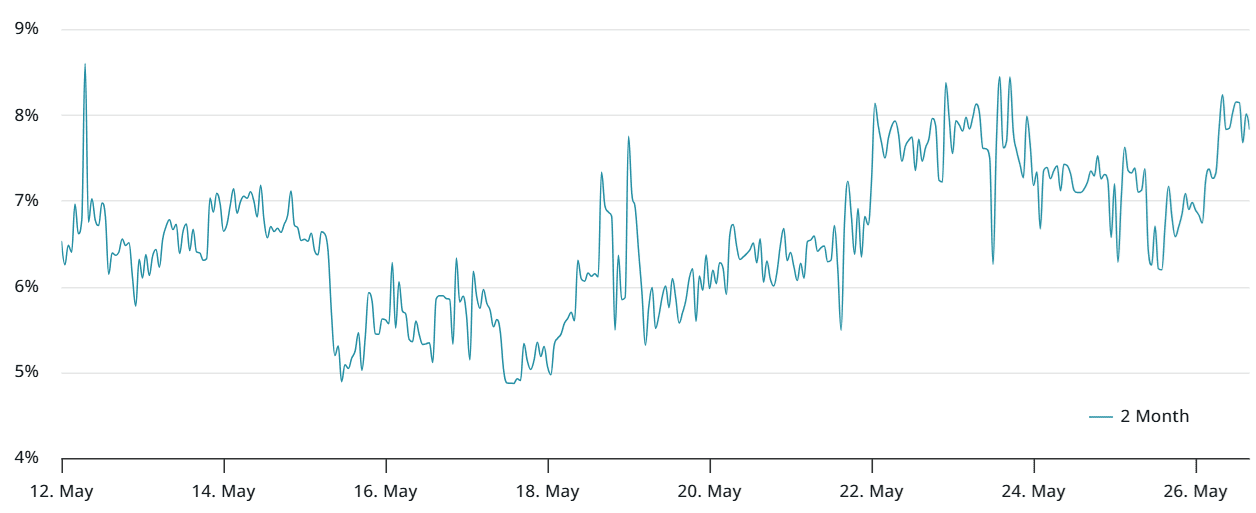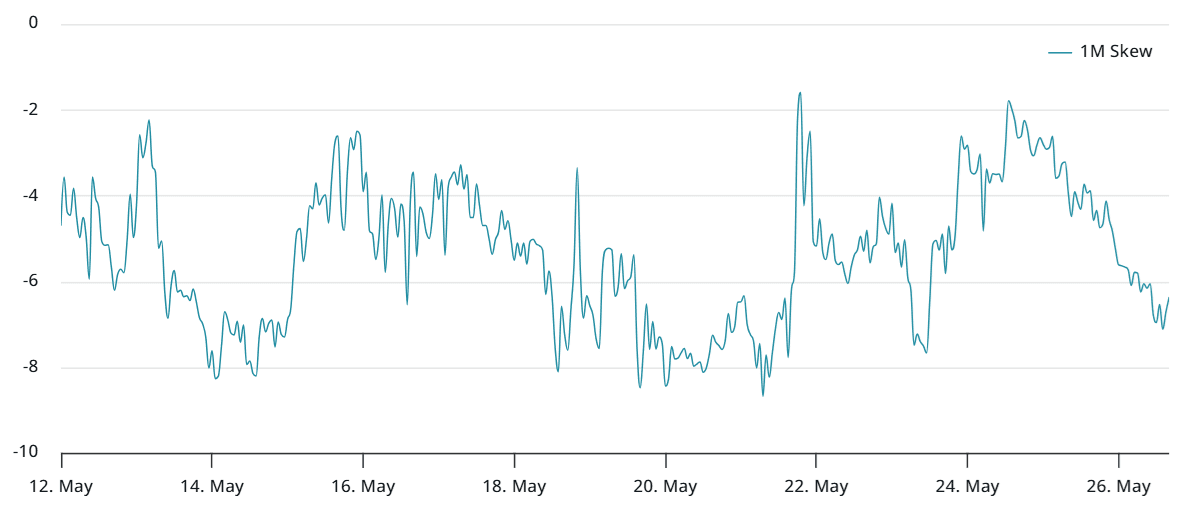Key Takeaways:
- Bitcoin’s price is currently consolidating below $110,000 due to a combination of macroeconomic uncertainty and anticipation surrounding Nvidia’s earnings report.
- Strong inflows into spot Bitcoin ETFs and positive signals from Bitcoin options data suggest that clarity in the U.S. economy could unlock new highs for BTC.
- Institutional investors continue to accumulate Bitcoin, indicating long-term confidence in its value proposition.
Bitcoin’s recent price action reflects a tug-of-war between positive fundamental factors and external macroeconomic pressures. While the cryptocurrency has struggled to break through its previous highs, several underlying indicators suggest a bullish outlook.
The delay of tariffs on European Union imports offered a brief respite to markets, but uncertainty persists regarding the broader economic impact of ongoing trade conflicts. Investors are closely watching Nvidia’s earnings report on May 28, which could provide insights into the resilience of the tech sector and influence overall risk appetite. This anticipation may be contributing to Bitcoin’s current consolidation phase.
Institutional Demand and Derivatives Market Signals
Despite the price stagnation, institutional interest in Bitcoin remains robust. Strategy recently acquired $427 million worth of Bitcoin at an average price of $106,237, demonstrating continued confidence in the digital asset’s long-term potential. Spot Bitcoin ETFs have also experienced significant inflows, further validating institutional demand.
JPMorgan’s decision to allow clients to purchase spot Bitcoin ETFs marks a significant step towards mainstream adoption. While the bank will not offer custody or official recommendations, this move provides indirect Bitcoin exposure to its vast customer base.
Derivatives market data also paints a positive picture. The Bitcoin futures premium has increased, indicating growing demand for leveraged long positions. Furthermore, the Bitcoin options delta skew suggests that put options are trading at a discount, reflecting a bullish sentiment among market participants.

Key Economic Data on the Horizon
While internal factors support Bitcoin’s potential upside, external economic data will play a crucial role in determining its short-term trajectory. Investors are eagerly awaiting the Richmond Fed manufacturing index and PCE inflation data, which could provide insights into the health of the U.S. economy.
Concerns surrounding U.S. government debt and the threat of a potential recession continue to weigh on market sentiment. A recent drop in MBA Mortgage Applications prompted traders to adopt a more cautious stance. However, positive economic data could alleviate these concerns and pave the way for Bitcoin to break above the $112,000 mark.

Factors Influencing Bitcoin’s Price
Several factors are currently influencing Bitcoin’s price, including:
- Macroeconomic Uncertainty: Global economic concerns, such as inflation and potential recessions, can impact investor risk appetite and negatively affect Bitcoin.
- Regulatory Developments: Government regulations surrounding cryptocurrencies can significantly influence market sentiment and price volatility.
- Technological Advancements: Innovations in blockchain technology and the development of new applications for Bitcoin can drive adoption and increase its value.
- Market Sentiment: Investor sentiment, driven by news, social media, and other factors, can play a significant role in short-term price fluctuations.
Bitcoin’s Long-Term Outlook
Despite the current challenges, Bitcoin’s long-term outlook remains positive. Increasing institutional adoption, growing awareness of its potential as a store of value, and the ongoing development of its underlying technology all contribute to its potential for future growth.
As the cryptocurrency market matures, Bitcoin is likely to become increasingly integrated into the global financial system. This could lead to greater stability and reduced volatility, making it an attractive investment option for a wider range of investors.
In conclusion, Bitcoin’s current consolidation phase presents an opportunity for investors to assess its fundamental strength and consider its potential for future growth. While macroeconomic headwinds may continue to pose challenges, the cryptocurrency’s underlying drivers remain strong, suggesting that a new all-time high is within reach.